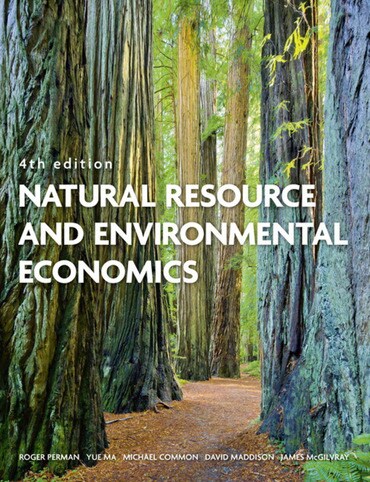
- Roger Perman |
- Yue Ma |
- Michael Common |
- David Maddison |
- James Mcgilvray |
Title overview
Now in its fourth edition, this book is a comprehensive and contemporary analysis of the major areas of natural resource and environmental economics. All chapters have been fully updated in light of new developments and changes in the subject, and provide a balance of theory, applications and examples to give a rigorous grounding in the economic analysis of the resource and environmental issues that are increasingly prominent policy concerns.
This text has been written primarily for the specialist market of second and third year undergraduate and postgraduate students of economics.
This edition includes a Companion Website.
- Extensive coverage on economy-wide modelling, valuing the environment, the practice and ethics of discounting and climate change.
- ‘Real-world problems’ and policy, keeping you informed with topical debates.
New to this Edition
- New chapter on trade and the environment, and for the first time, the text examines the economics of happiness.
- Extended coverage on economy-wide modelling, valuing the environment, the practice and ethics of discounting and climate change.
- Easy to follow, new two colour text-design and improved pedagogical features for enhanced readability and quick reference.
- New boxes on ‘real-world problems’ and policy, keeping you informed with topical debates.
Table of contents
- 1: An introduction to natural resource and environmental economics
- 2: The origins of the sustainability problem
- 3: Ethics, economics and the environment
- 4: Welfare economics and the environment
- 5 Pollution control: targets
- 6: Pollution control: instruments
- 7: Pollution policy with imperfect information
- 8 Economy-wide modelling
- 9: International environmental problems
- 10: Trade and the Environment
- 11: Cost-benefit analysis
- 12 Valuing the environment
- 13 Irreversibility, risk and uncertainty
- 14: The efficient and optimal use of natural resources
- 15: The theory of optimal resource extraction: non-renewable resources
- 16: Stock pollution problems
- 17: Renewable resources
- 18: Forest resources
- 19: Accounting for the environment
Author bios
Roger Perman is Senior Lecturer in Economics, Strathclyde University. His major research interests and publications are in the field of applied econometrics and environmental economics.
Michael Common is Professor in the Graduate School of Environmental Studies at Strathclyde University. His major research interests are the development of ecological economics and policies for sustainability.
Yue Ma is Associate Professor in Economics, Lingnan University, Hong Kong, and Adjunct Professor of Lingnan College, Zhongshan University, China. His major research interests are international banking and finance, as well as environmental economics for developing countries.
David Maddison is Professor of Economics at the University of Birmingham
The late James McGilvray was Professor of Economics at Strathclyde University. He made important contributions in the fields of input-output analysis, social accounting and economic statistics, and to the study of the economics of transition in Central and Eastern Europe.